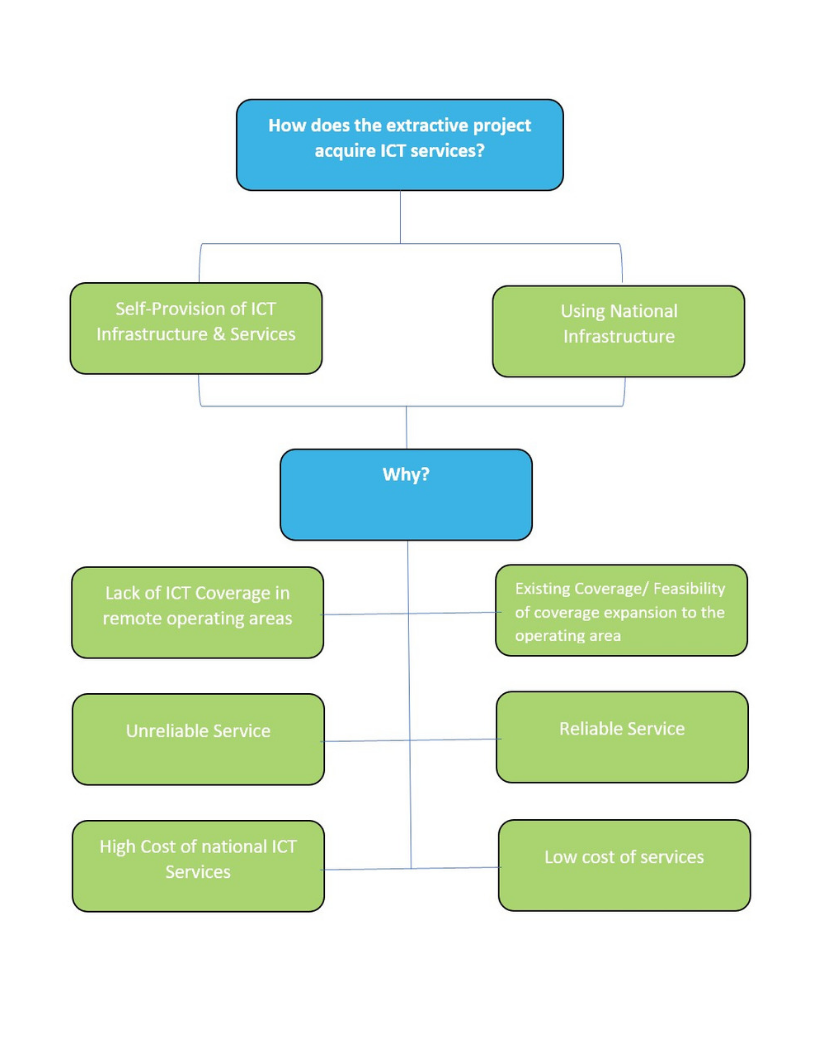- Home
- Topics
- Shared Use of Extractive Infrastructure and Resource Corridors
- Sharing Information and Communication Technology
- Understanding What is at Stake
Understanding What is at Stake
At a Glance
-
Extractive companies may use their own exclusive information and communication technology (ICT) infrastructure, depend on the national ICT infrastructure, or have an arrangement by which they share ICT infrastructure.
- Assessing extractive industries’ current ICT arrangements in a given country is a first step toward planning how their future investments can be leveraged to fill gaps in the country’s overall telecommunications infrastructure.
- It is also important to assess a country’s infrastructure needs and institutional gaps, to identify the most realistic opportunities for synergies with extractive industries, as well as the steps needed to achieve them.
Key Resources
- A Framework to Approach Shared Use of Mining-Related Infrastructure (Nicolas Maennling, Alpa Shah, Sophie Thomashausen, Perrine Toledano)
- International Telecommunication Union Statistics (International Telecommunications Union)
Topic Briefing
Understanding what is at stake involves assessing extractive companies’ existing ICT arrangements and why they chose a given arrangement. An assessment of the country’s infrastructure needs and institutional gaps is also important, to identify the most realistic opportunities for synergies with extractive industries, and the steps needed to achieve them. Projects whose infrastructure is completely offshore do not have to be considered in this assessment.

